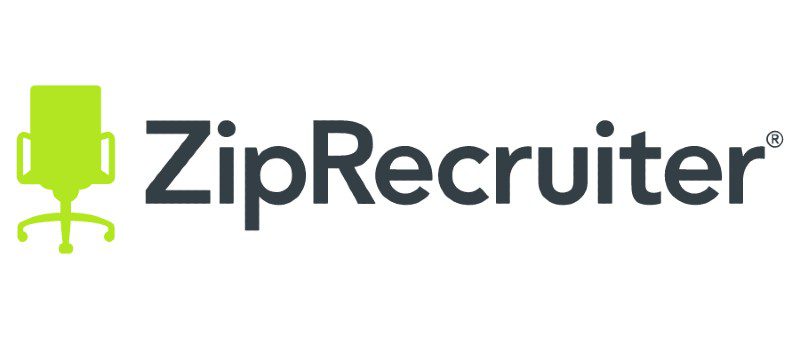3 E’s for successful recruiting in tough times
Discover how to understand exactly what your employer brand is made up of and how to utilize it for best benefit.
Understand what the 3 Es of successful recruitment are: employer brand, employee value proposition (EVP), and exceeding candidate expectations (and why they’re important).
Get a pulse check on where the recruitment market is, and what jobseekers want, right now.


In the toughest labor market most in HR and talent acquisition (TA) have ever experienced, UNLEASH is excited to share how tweaks to, rather than overhauls of, strategy can help mitigate against this difficult environment.
In conjunction with Bob See, VP, Head of Talent Acquisition at Ziprecruiter, Kate Graham Head of Content Labs and Insights at UNLEASH shares how a tailored approach to employee value proposition formation, a focus on the employer brand and a genuine want to exceed candidate expectations can help organizations overcome difficulties in a hiring market where some industries, according to ZipRecruiter statistics, are facing job opening increases by 100% month-on-month. Insights will include ways to curate and create the strongest possible employer brand, how and where employer brand and EVP interact, and why a 3 E’s approach is crucial in difficult times.
Watch on-demand to:
- Understand how to get your EVP and brand out into the relevant markets, utilizing the incumbent workforce and different avenues of exposure
- Hear why reliability, punctuality, responsiveness, trust, and good communication still have a central role to play in effective recruitment
- Get to know the exact places where tweaks to recruitment practice can have an outsized positive impact.
This is an incredible job seekers market and difficult for employers hiring.
Bob See, VP, Head of Talent Acquisition at ZipRecruiter
Employers are not updating their employer brand quickly enough…
During the live webinar session, we polled attendees to see how they thought their employer brand had evolved as a result of the pandemic and subsequent labor market shifts, such as the so-called Great Resignation and other changes to the employee-employer power dynamic.
With circa a third of poll respondents saying their employer brand had not changed at all, and another third saying their brand had only been somewhat tweaked, there is a clear argument that businesses are not evolving their brand quickly enough in response to structural movements in the hiring market. Yet, a good employer brand can be a great tool to help employers stand out in a super competitive market.
…but brand and EVP can be the differentiator in a hard-to-control market
However, as Graham noted during the webinar, there is much that HR and TA functions cannot control in this labor market. See agreed, adding that even the employer brand is privy to outside forces, such as how it is covered and perceived by the media.
This doesn’t mean employers are off the hook, though. If they dig down into what makes up their brand, See believes organizations have a better chance of hiring successfully. This, as See laid out, means more than just thinking about how a brand sits in the external market but understanding how brand and EVP interplay and are deeply interlinked. It also requires looking at how both are affected, and defined, by factors including what employees get from employers, compensation packages, career development, company mission, paid time off, and flexible work offerings.
If is in this way that businesses can see recruitment effectiveness is deeply linked to people processes in all areas of organizational life and make changes as necessary
Understand what your EVP is and what your ideal hire looks like
One of the best ways that employers can understand what might help them attract talent is by looking at what the incumbent workforce like, or dislike, about organizational life, See explained. This can be done by surveying employees and using that data to shape an EVP – everything from salary, to L&D on offer to career growth options – that stands out on the market.
However, internal considerations and evaluations need to be supplemented by external benchmarking on important factors such as salary and benefits. This is vital so that firms do not get left behind, either in their sector or in the talent marketplace in general. As See says, referencing his tech industry experience: if a rival is offering free meals, you need to as well.
Companies should also think outside the box. They cannot just adjudge how their current employee offering – everything from training programs to performance management – interacts with what they think their current ideal hire looks like; this must be considered against hires with potential, future hires, and future needs, too.
HR and TA need to step up the game
Although candidates have more options regarding choices in the employment market right now, HR and TA can attract them, See explained, if they are prepared to up their game. What this means is that they need to exceed expectations. Recruiters must be good at communication and deliver excellent customer service to the candidates they speak to.
Perhaps obviously, this is easier said than done but there are clear areas where organizations can get ahead:
- Differentiate EVP but be consistent: With sales representatives likely having different drivers and needs than machine-learning programmers, an organization’s EVP should speak to them in different ways. That said, utilizing EVP for different markets and talent pools doesn’t mean it should be inconsistent and contradict itself.
- Be flexible: Consider that 90% of candidates now want flexibility and understand how offering, or not offering that, reflects on your brand and EVP.
- Evolution will be constant: Changes, not just to the labor market, but to global health, geopolitics, and expectations of business mean that evolution is near-constant. When it comes to hiring, HR and TA now need to fail fast, pick themselves up, and try what they think will work well next. The best way to do this: incremental changes across the board rather than seeking to overhaul one area of operations.
- EVP only works if your brand is seen: The EVP is what will convince a candidate to join, or not, but it only works if the brand is seen by your talent pipelines. So, get it out there. It’s also important to remember that the brand must be authentic. Don’t get caught up with aspiration over lived experience.
- Enable your employees: Colleagues and the workforce can often be the best way of boosting the brand and sharing the truth of your EVP. Enabling them with assets and templates, and information about the business can help leverage your brand in an effective and much bigger way.
- Understand key metrics: Obviously, recruiters will be judged on the number of hires they make. There are other important metrics, though. Here, metrics that can judge quality are important. Candidate experience surveys and process efficiency measurements are very important here.
